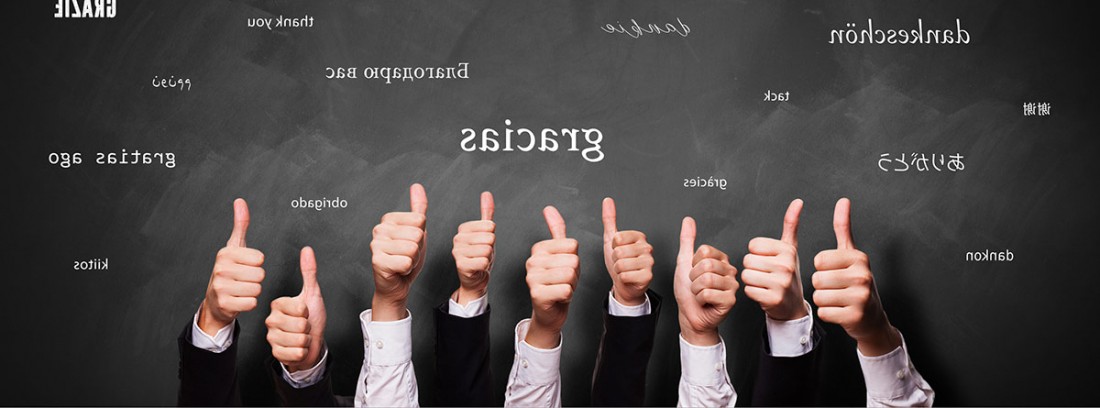What are the health benefits of saying thank you?

Gratitude as potentiality
Many people understand the practice of gratitude as something distant, almost mystical, more typical of Buddhist monks than ordinary people. However, developing this capacity in our day to day can produce a change of focus in the way we position ourselves in the world. Gratitude leads you to appreciate what is working in your life, it helps to make your virtues and those of your environment visible, and it focuses you on the here and now, more than on everything you need to achieve.
Gratitude can also help to reconcile with the past, understanding the difficulties of other times as learning and not as trauma, which lightens our backpack of negative experiences. It helps us learn about ourselves and others.
The good news is that gratitude generates addiction: the more we practice it, the more we need to practice it. And it is that gratitude releases dopamine, a natural reward of our body that acts as a stimulant and as a motivator.
Health benefits
There are numerous scientific investigations that support the power of gratitude. Among the most studied benefits are the following:
- Improves physical health. It reduces blood pressure, reduces cortisol levels, reduces the probability of disease recurrences, etc.
- Reduces physical pain.
- Reduces anxiety and stress levels.
- It improves the quality of sleep, reduces the time it takes us to fall asleep and increases the hours we sleep.
- Improves cognitive performance.
- It connects us with ourselves and with others, and increases our, which favors the creation of new social ties or strengthening those that already exist.
- Generates and increases the feeling of well-being.
- Renew our internal energy.
- It makes us stronger psychologically. It increases our, recovering more effectively in the face of adversity.
- Improves mood thus reinforcing self-esteem.
- It reduces negative thoughts, pessimism and victimhood, helping us to gain perspective on problems.
- It reduces aggressiveness and makes us more patient and understanding.
How to train gratitude?
Training gratitude goes beyond basic politeness like saying thank you when you are served coffee or given a seat. It is about incorporating it as an attitude, opening the senses, reflecting and transferring it to our daily lives. Like all learning, it is established with repetition. 30
Some ideas that can help you are:
- Create a gratitude journal: daily write down everything for which you are grateful. They don't have to be great things. Tasting a good fruit or a gesture from a person at one point may be enough. Write down everything that you may have missed and if someone else has intervened: tell them!
- Write a thank you letter to a significant person in your life. Be grateful for everything he has given you, what he made you learn, what he meant in your development as a person, etc. If possible and you feel like it, give it to him.
- The gallery of gratitude: Choose a box or container where you can keep small objects that symbolize moments when you have felt particularly happy or grateful. Some theater tickets, the role of a special chocolate bar, the label of a garment that makes you feel particularly comfortable…. You can also give it the photo album format, now that we always carry our mobile with us.
- Photograph moments, situations, objects, people ... things that make you feel grateful or evoke this feeling.
- The walk of gratitude. Get out of the house and take a special walk. Focus all your attention on those things you like, focus on perceiving the most sensory side: smells, sounds, light, etc. and also observe situations that may be curious to you. Get away from your usual worries and enjoy the present moment.
- Condensed messages. Write concrete sentences with messages that activate feelings of gratitude in you. You can write them down on small post-its and hang them in plain sight in your usual spaces. You can also keep them in a small box and randomly pull one out whenever you feel like it, like an emotional toolbox.
- Thanks to others whenever you can.
- The good news is that gratitude is addicting - the more we practice it, the more we need to practice it. And it is that gratitude releases dopamine, a natural reward of our body that acts as a stimulant and as a motivator.
- Training gratitude goes beyond basic courtesy rules like thanking when you are served coffee or given a seat. It is about incorporating it as an attitude, opening the senses, reflecting and transferring it to our daily lives.
- Like all learning, it is established with repetition. It can help you to write down every day what you are grateful for, little things; or photograph moments, situations, people ... that make you feel grateful; or thank others whenever you can ...
(Updated at Apr 13 / 2024)